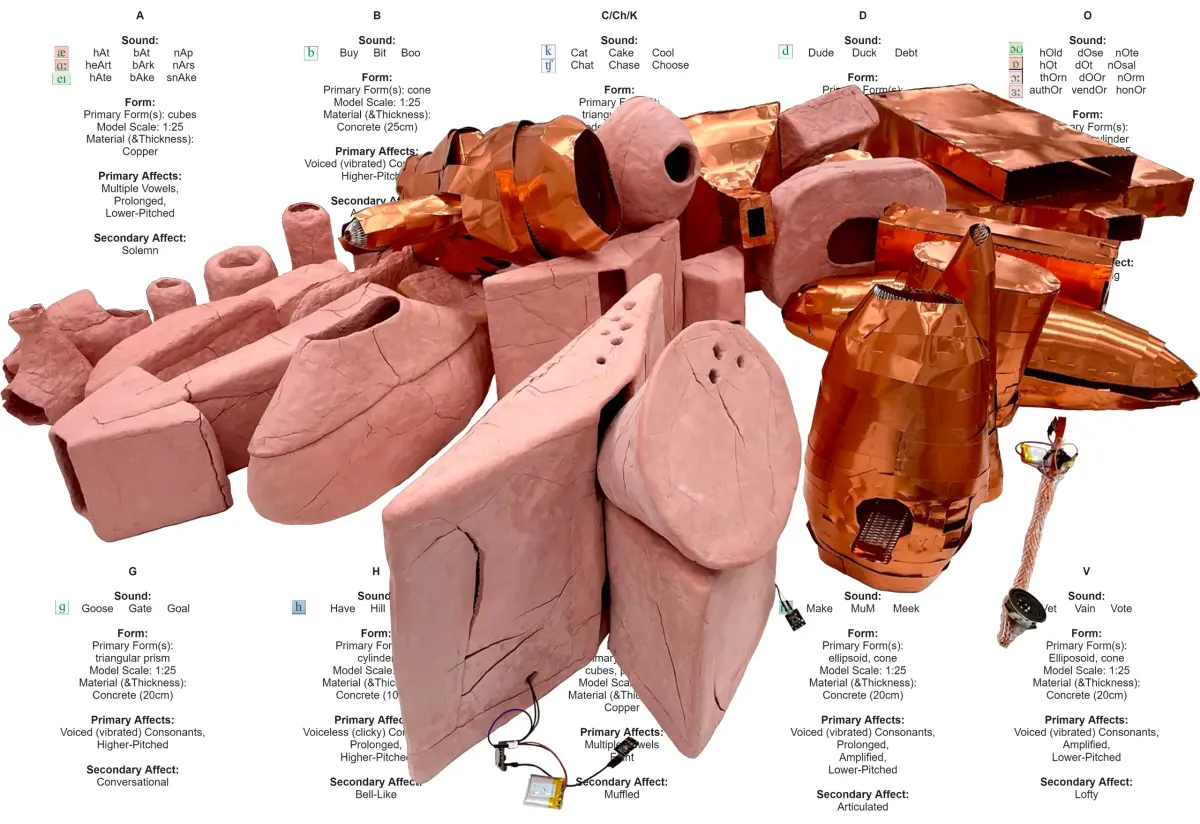
Mapping of Spoken Sounds
BY Chai Ruige
SUPERVISED BY Adj Asst. Prof. Wu Yen Yen
STUDIO THEME ALTERNATE HISTORIES, PERIPHERAL ASSOCIATIONS
Abstract
The cheapening of data and information nowadays has enabled an increased reliance on aural & visual communication as a means of message conveyance among people and between people and architecture. The shift from textual means to aural and visual means to understand a concept or a space leads to implications on the design of architecture. The thesis explored the production of architecture under this premise, using the spoken sounds in English, such as various vowels and consonants as the material and principle of form construction. The visual forms as an end product rewires our association of form with meaning.
The thesis includes two parts. Firstly, making form selection by experimenting and pairing spatial parameters with perceivably different spoken sounds. Secondly, form hybridization to bridge percepts (primary and secondary sound affects) and concepts of choice, hence, enabling a better understsanding of message intended (eg. centrality vs multiplicity vs sequence).
Using sound as the rule of form production of varied concepts, the project furthers meaning conveyance within a physical construct through both the auditory and visual experience that it carries.
Supervisor Comments
Verbal communication between people has always existed in space. This thesis posits that the role of architectural space in the conveyance of the spoken word goes beyond acoustics. Its ability to transform and shape the spoken word will train a novel way of seeing space-form when considered in tandem with speech communication, in a time where sound clips and podcasts have challenged the hegemony of printed text in recent years. Ruige’s thesis explores the elemental space-form as carriers of the spoken word in design generation. From perusing how the grandeur of a political speech reverberates through convex shapes to conjuring spirituality through sustained chanting in a tubular tower, Ruige’s world of handmade terra-cotta and tin instruments explores a fundamental cognitive bridge between space-form perception and the empirical quality of verbal communication.
- Adj Asst. Prof. Wu Yen Yen